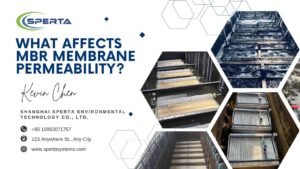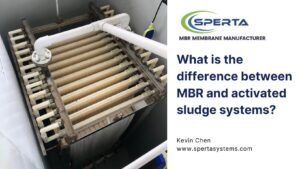In a wastewater treatment plant (WWTP), high temperatures can arise in certain processes or conditions, which could pose a risk to non-metal materials like UPVC (Unplasticized Polyvinyl Chloride) or other polymer/plastic materials. It’s important to understand the scenarios where high temperatures might occur and their potential impact on non-metal components:
1.Temperature Fluctuations:
WWTPs can experience temperature variations due to weather, ambient conditions, and process dynamics. While most non-metal materials used in WWTPs are designed to withstand a certain temperature range, extreme fluctuations or prolonged exposure to high temperatures can lead to material degradation, distortion, or reduced structural integrity.
2. Heat from Process Operations:
Certain wastewater treatment processes involve elevated temperatures. For example, organic materials are broken down at high temperatures in anaerobic digestion or thermal hydrolysis processes to enhance biogas production. The heat generated during these processes can affect nearby non-metal components, especially if they are not specifically designed to handle high temperatures.
3. Hot Liquid or Chemical Exposure:
Some treatment processes might involve handling hot liquids or chemicals. If these substances come into contact with non-metal components, they can cause softening, warping, or chemical degradation of the materials.
4. Steam and Vapor Exposure:
In processes where steam or vapor is generated, non-metal components near the source of steam or vapor could be exposed to higher temperatures. This exposure might lead to material degradation or loss of mechanical strength over time.
5. Thermal Expansion and Contraction:
High temperatures can cause non-metal materials to expand, and subsequent cooling can lead to contraction. Over time, repeated thermal expansion and contraction cycles could contribute to material fatigue or failure, especially if the materials are not designed to handle such conditions.
6. Maintenance and Repairs:
During maintenance activities, localized heating (such as welding or hot work) can inadvertently expose nearby non-metal components to high temperatures, potentially causing damage.

The following steps are recommended to reduce the risk of high temperatures in the WWTP environment:
- Material Selection: Choose non-metal materials that are specifically designed to withstand the expected temperature ranges in the WWTP processes. Some polymers or plastics are engineered to handle higher temperatures, and selecting the appropriate material can help mitigate potential damage.
- Isolation and Protection: Install thermal barriers or shielding to protect non-metal components from direct exposure to high-temperature sources, such as steam or hot liquids.
- Regular Inspection and Maintenance: Implement a proactive maintenance program to regularly inspect non-metal components for signs of damage or degradation caused by temperature-related factors. Address any issues promptly to prevent further deterioration.
- Process Monitoring: Implement temperature monitoring and control systems to ensure that processes stay within safe temperature ranges for non-metal materials.
- Consult with Experts: Work with engineers and materials specialists with experience with non-metal materials and their performance in high-temperature environments to ensure proper design and installation.
Ultimately, understanding the potential risks of high temperatures and taking appropriate measures to mitigate those risks can help maintain the integrity and functionality of non-metal components in a WWTP setting.







